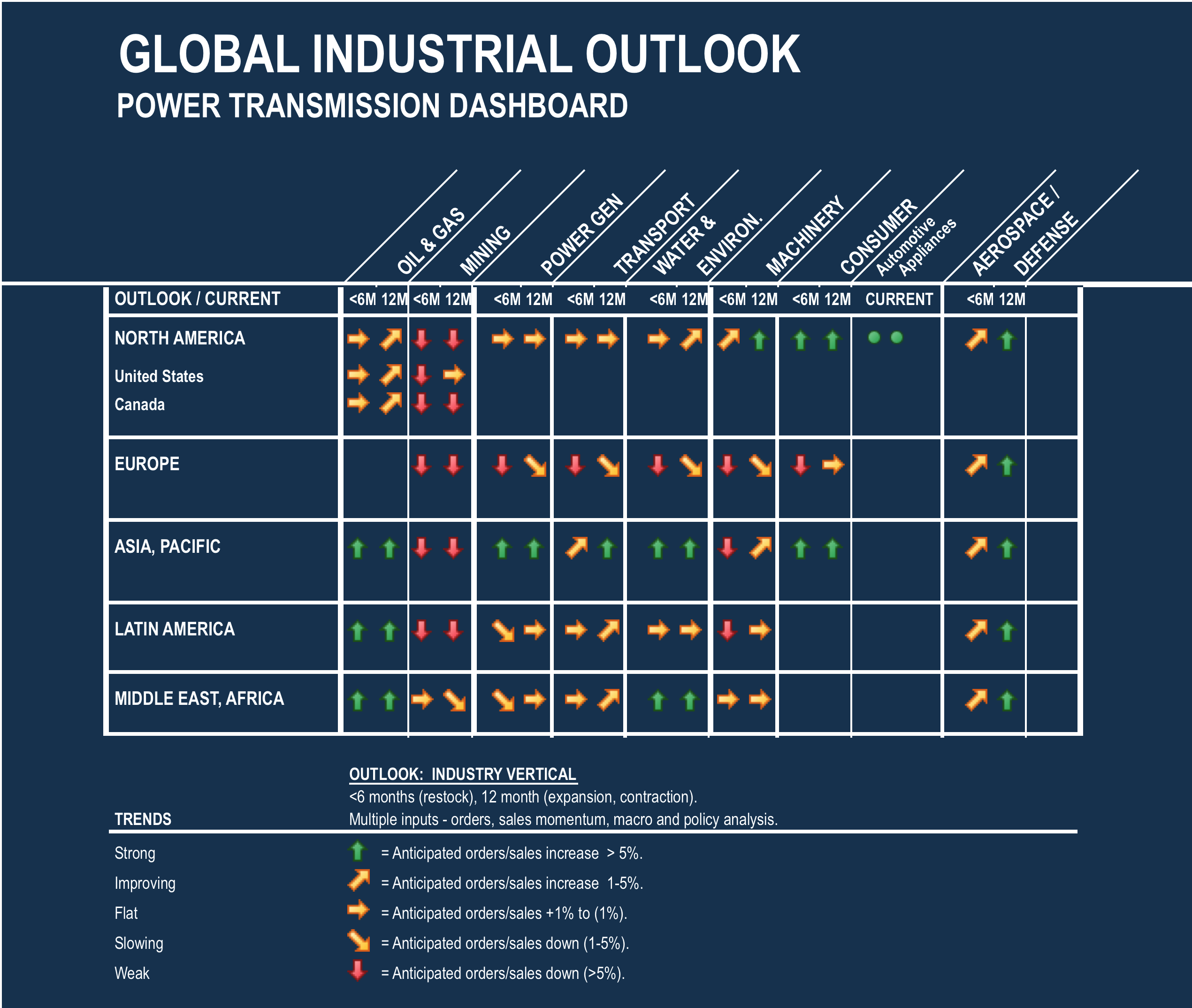Does 2Q Weakness Mean You Can’t Make Money?

Since mid-June, we’ve attended the Paris Air Show and met with companies involved in oil production, hydraulic fracturing, and wind turbine towers and components. As an investment analyst, I am always seeking to help my clients anticipate change in order to manage risk and capture alpha (positive returns relative to the market). Sometimes there is a lot to do in the market; at other times, not so much.
Right now, we think “not so much,” but we have three ideas with “way more than beta” potential.
Bombardier (BBD.B): Ready to soar.
Caterpillar (CAT): Controversial, but excellent risk/reward.
General Electric (GE): Watch the paint dry; make money patiently.
No “market call” here: The Big Joke will continue into the 2014 midterm elections. A trial balloon goes up about an improving economy, cutting back on money supply. The market goes down, investors squawk, the U.S. Treasury re-promises to print money. It continues until it does not. I estimate November 2014 at the earliest.
Turning to industrial stocks, first let’s discuss conditions in the global industrial economy. Here is what we’ve found:
Little has changed since 1Q. Second-quarter revenue and earnings are indicating a sluggish global industrial economy, but also pockets of growth. In addition, we believe the economy should modestly accelerate both sequentially and against easy prior-year comparisons in the second half.
Optimism persists in certain sectors. Energy and commercial aviation demand continues to grow. Both are justified. Energy is a strategic imperative for any growing, or mature, economy. Commercial aviation investment is being enabled by better cash flow and is necessitated by the need to migrate to more efficient aircraft fleets. General Electric and United Technologies continue to spend heavily on engineering to get those new engines ready.
Easier comparisons will help elsewhere. We expect improving year over year results in the second half in construction equipment and truck engines, particularly in North America.
Mining can’t be helped. It is rolling over. Expect good consumables activity, but new equipment and projects will taper off. I estimate they will be down 20–30% over the next two or three years.
Overall, we remain in a moderate global economic growth environment that should continue to support maintenance capital spending and selected expansion, but no significant increases.
For detail, 8 of the 10 industry verticals in our broader Global Industrial Outlook (GIO) are detailed in the following chart:
Oil and Gas: Rig count growth globally will continue (upstream) while North America starts to see easier comparisons. We’ve met with the C-suite of two upstream companies this month, and activity remains strong. Offshore production remains hot because upstream is a strategic imperative for developing nations. Key beneficiaries include GE, Siemens, and Dover Corporation. Closer to home, North American midstream activity (pipelines and infrastructure) remains robust, and it is possible, although too early to know for sure, that the oil train tragedy in Quebec can spur less resistance to pipeline building.
Mining: In our view, capital spending is likely to decline by 20–30% over the next two to three years. This is incrementally negative for Caterpillar, Joy Global, and Atlas Copco. Large miners will likely complete current projects, but their “unapproved” projects smell like vapor to us. The challenge now is driving productivity, not spending more. And many small mining companies are broke. Not good.
Power Generation: U.S. demand will not pick up before 2015–2016 as greater energy efficiency and modest economic growth keep reserve margins (excess generation capacity) sufficiently high to push out investment. Although arguments abound that aging plants must close and a “war on coal” might force increased investment, we are highly skeptical that the current administration has the muscle to force the issue. Wind comparisons will get better after year-end, but we are not holding our breath on a return of the production tax credit (PTC). Even if it happens, we anticipate a more steady pace of activity once those comparisons are worked through. Globally, capacity additions are strong in Asia (Chinese coal in particular) and should continue, while a number of projects are working their way into backlog with E&C companies.
Transportation Infrastructure: Offshore-related activity remains strong, and we’ve heard rumors of a pickup in shipping that we do not believe (well, perhaps there will be a bump off the bottom), except for specialized needs like LNG (liquefied natural gas). Road construction and repair work will be steady at least through 2014 — although sequestration matters — because of the two-year highway bill extension. The situation should be supportive of steel and cement demand at or near current levels.
Water and Environmental: Municipal budgets remain strained, and industrial customers choose not to invest, although we note that easier comparisons are coming in the second half. Internationally, we are hearing of strong continued demand, particularly in desalinization. The North American outlook should improve, on a lagging basis, with rising home prices driving higher priority property taxes. Notably, a private E&C executive recently told us he is actively seeking to hire sales engineers to support opportunities in the United States and Mexico.
Machinery: The overall picture continues to improve.
Construction Equipment: Production is now rising sequentially as Caterpillar has worked off excess inventory, and second-half comparisons will be easy. Much controversy is arising from China, given weak exports (although we don’t believe the recent “down 3%” — that smells like better accounting on invoices). Mining equipment is another matter, and layoffs in Milwaukee do not strike us as being likely to reverse. Tough financial conditions with Canadian junior miners could lead to excess equipment coming on market. Truck engines are set to recover. Agricultural equipment demand in North America is expected to soften year over year through Deere’s fiscal year ending October 31 in what is best described as a “more of the same” environment (high farmer cash receipts, steady demand).
Consumer (auto, appliances): In the United States, improving real estate prices are helping bolster consumer balance sheets and thus pent up demand for durable goods. Nothing dramatic, but I estimate +5–10% for appliances and, more importantly for you and the U.S. economy, continued strength in auto production. Internationally, Europe remains weak, although easier comparisons are coming and certain resource-rich emerging markets (Middle East, Africa) will also show continued growth.
Aerospace/Defense: There are a couple of moving parts in this area. Commercial activity remains robust, while sequestration is now sinking its teeth into operating tempo. On the commercial side, we attended the Paris Air show in June, and our discussions with multiple executives there signaled continued optimism, which was backed up by solid order books. Pockets of weakness do persist — lowered air freight demand is a negative — but will be more than offset by airline requirements for more efficient aircraft. Aftermarket MRO remains weak, but components specific to power transmission should do relatively well. General Electric and United Technologies (Pratt & Whitney) continue to invest to grow their new generation engine offerings to support customer demand. The competitive game is on: UTX is getting back into commercial aircraft engines through its wins with Bombardier (BBD.B) and Embraer (ERJ), and General Electric must keep up. Defense is another matter. Sequestration is taking a bite out of U.S. operating tempo, and international sales are not going to completely pick up the slack. Do not confuse yourself with the idea that long-term thinking prevails: The F-35 is actually at risk of a delay that will drive long-term costs higher, and even if it doesn’t happen, we know of civilian Department of Defense employees that are on 32-hour weeks.
Capital spending is flat at best — no better. Deals create risk for you. The global economy continues to grow but not fast enough to drive significant growth in global fixed investment. Generally speaking, the C-suites are focused on optimizing their footprint, improving the supply chain, and driving productivity. There is no time like the present to think very hard about business risk. Urge to merge is high and usually leads to delayed or cancelled capital spending at the target. In fact, if you run a small manufacturer and have a single client or factory that generates more than 10% of your sales, we should talk. We can help you assess your risk and develop a growth strategy to protect your company.
Things to Buy: Most industrial stocks right now are generating beta — plus or minus a few points relative to the market. Here are three exceptions, each with a simple, executable thesis:
Bombardier (BBD.B): Ready to soar.
- Stock: Trading around C$5 — we see $7 in the next 12–15 months as the first CSeries is delivered. Long term, we can get to C$10–17 in three to five years.
- Thesis: Competitive advantage — the first CSeries delivery increases average revenue per aircraft (mix), and cash flow will rise dramatically as capital spending drops by 50% by 2015. It will be hard to screw that up.
- Risk: Questions persist as to how much share the aircraft can take. At the current price, it doesn’t matter. In a year or so, at C$7–8, then we worry about it.
Caterpillar (CAT): Controversial, but excellent risk/reward.
- Stock: Has traded around the mid 80s recently — we see at least $100 in six to nine months, with possible upside to $110 (unlikely, but possible).
- Thesis: Concerns are mining (even worse than people think) and China (which will be okay). Even assuming that mining activity in North America and Asia craters by 20–30% over the next two to three years, CAT should earn $8 in 2014 versus the $6.84 consensus for 2013 simply on the basis of easy comparisons in construction and a modest recovery in power systems, thanks to the fact that the fracking equipment overhang has subsided.
- Risk: We don’t see it; expectations are pretty washed out here.
General Electric (GE): Watch the paint dry, make money patiently.
- Stock: A great long-term value — in a full power generation recovery (not before 2015–2016), this company could earn $2.50 per share, get the dividend back to $1.28 annualized, and on a 3% dividend yield, trade to $40 versus the current $24.
- Thesis: The focus has shifted to driving costs out (back-end shared services), pruning noncore finance businesses, and repurchasing stock. Share count is expected to drop to 9.0 billion–9.5 billion shares from 10.4 billion by 2015. Cash position in both GE and GE Capital is very strong.
- Risk: Going back to overpriced deals.
If you liked this post, don’t forget to subscribe to Inside Investing via Email or RSS.

